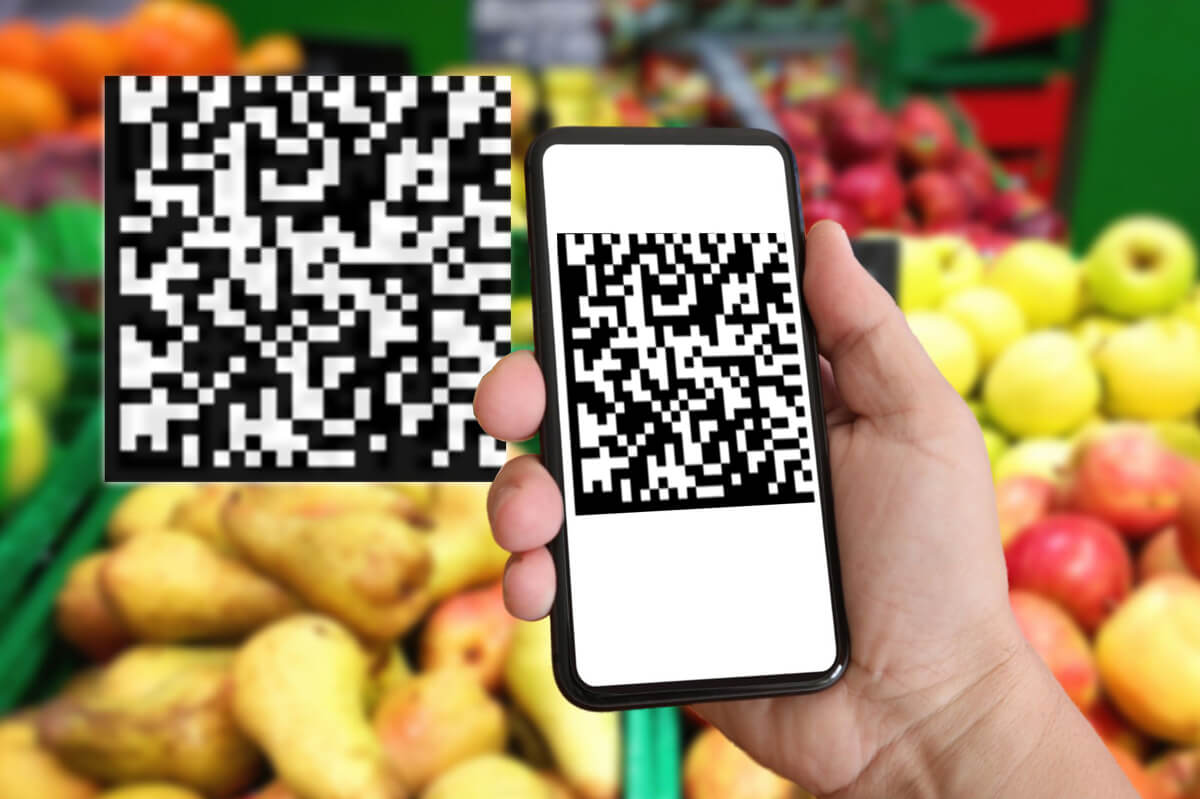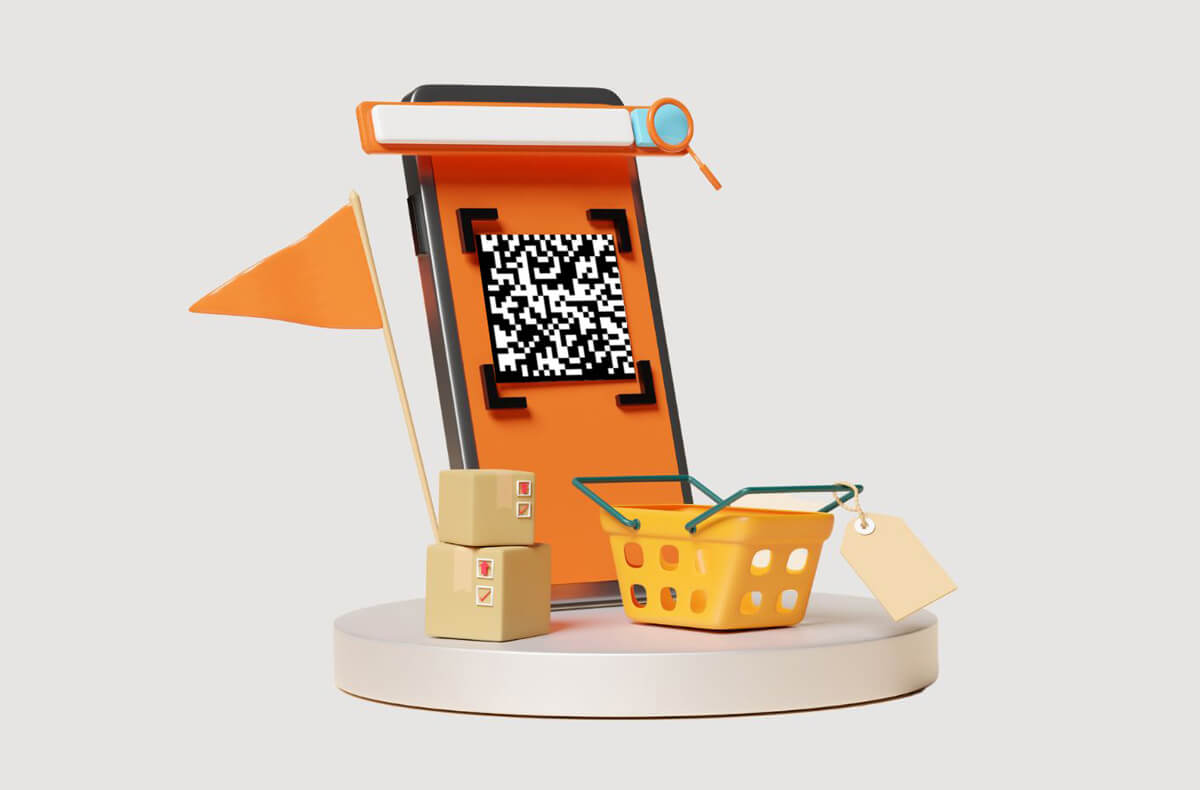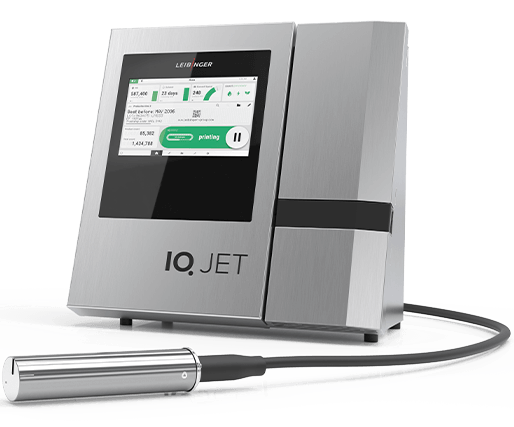2D barcodes, particularly data matrix, play a crucial role in product coding, traceability, and marking. In this blog, we'll explore their fundamentals, differences from other codes, structure, and advantages. We'll also cover traceability and legal changes impacting businesses and countries in the realm of 2D barcodes.

1. Decoding the Basics: Understanding data matrix codes
What is a data-matrix code?
A data matrix code is a two dimensional code that can store a large amount of information in a compact format. Unlike one-dimensional barcodes such as the EAN code, data matrix codes can encode additional data beyond just product identification, including expiration dates, batch numbers, serial numbers, store information, registration promotions and much more detail. Furthermore, data matrix codes are highly robust and can still be read even if parts of the code are damaged, partially removed or obscured. Thus, the use of the data matrix codes covers the requirement of more data recording on less space as well as error correction.
What is the difference between data matrix code and 2D barcodes?
A data matrix code is a 2D barcode consisting of black and white or contrasting dark and light cells arranged in a grid to encode data. Being omnidirectional, data matrix codes can be read from any angle.
What is the difference between 2D code and QR code?
A 2D barcode is a general term used to describe any two dimensional barcode, whereas a QR code, short for Quick Response code, is a specific type of 2D barcode that consists of black squares arranged on a white background.
The power of traceability in 2D barcodes
Traceability is a critical aspect of supply chains and product authenticity. 2D codes, including data matrix codes, enable enhanced traceability by allowing manufacturers to encode vital information such as manufacturing dates, origins, and tracking numbers. This information can be used to monitor and trace products throughout their entire lifecycle, promoting transparency, quality control, and efficient recall management.
Encoding information
Encoding information in data matrix codes can be done using specialized software or third party app. In this process, the information to be encoded is created in black and white cells in the form of rectangular patterns, following an international standard. Here, the maximum number of modules (square cells) arranged in horizontal and vertical direction within the code, along with solid adjacent borders and a finder pattern, defines the overall dimensions of the code size. Thus, data matrix codes can be created in various sizes, starting from small codes with a size of, for example, 10x10 modules to larger codes with a size of 144x144 modules or even larger.
It is important to note that as the size of the data matrix code increases, so does the capacity to store information. Larger codes can hold more data, while smaller codes have limited storage space.
Decoding the structure of data matrix codes
Scanning or decoding data matrix codes can be done using a 2D-barcode scanner, an omnidirectional camera scanner or easily by mobile devices. These codes are ideally suited for a wide range of consumer-facing applications. As these can be easily scanned with mobile phones and in this way consumer (mobile phone users) decode the information stored directly at the point of sale.
The GS1 data matrix code: a standardized approach
The GS1 data Matrix code is a specific variant of the data matrix code that adheres to GS1 standards. GS1 is a global organization that develops and maintains standards for various industries, including supply chain management and product identification. The GS1 data matrix code ensures interoperability, consistency, and compatibility across different systems and applications.

2. Unlocking the benefits of data matrix codes – benefits for different groups
Data matrix codes offer numerous benefits for businesses and consumers alike.
Benefits for industries:
-
Greater storage capacity: 2D barcodes can store much more data than 1D barcodes. They can contain information such as text, images, URLs, and more.
-
Higher data security: 2D barcodes can be encrypted to ensure that only authorized individuals can access the information contained within them.
-
Flexibility: 2D barcodes can be printed on almost any material and in almost any size. They can also be applied to uneven or curved surfaces.
-
Cost savings: Since 2D barcodes can contain more information than 1D barcodes, they can help businesses require less material and space. They can also help streamline and speed up work processes.
Benefits for end customers:
-
With their high data capacity, these codes enable comprehensive product information, including allergen details, recipes, special offers, and FAQs.
-
All data is accessible to end customers through scanning with smartphones or specialized scanners.
Benefits for retailers:
-
Data matrix codes facilitate efficient product recalls, certification verification, and improved inventory management.
-
Higher readability: 2D barcodes can be read from almost any angle and in any direction, making them much easier to scan than 1D barcodes.
Overall, 2D barcodes offer a more powerful and flexible way to store and transfer data, making them ideal for a variety of applications, including packaging, logistics, security, marketing, and more.

3. Legislative Changes and Impact on Businesses and Countries
Governments worldwide are increasingly recognizing the importance of traceability and consumer safety. As a result, there have been legal changes mandating the use of 2D barcodes, including in various industries. These changes impact businesses involved in manufacturing, distribution, and retail, ensuring greater transparency and accountability throughout the supply chain.
Conversion to 2D barcodes according to GS1 by 2027
The GS1, a standardization organization, has decided to transition to 2D barcodes starting in 2027. These 2D barcodes will replace the familiar line barcodes currently found on packaging at retailers. Thus, after 50 years, the era of the old-line barcodes comes to an end. Consumers and industries are expected to benefit from this transition.
LEIBINGER – expert in 2D codes and official GS1 member
LEIBINGER is an official member of the GS1 Member Expert Group 2D Migration, a group consisting of over 30 members from the German industry. This expert group supports the development of recommendations and conducts pilot projects to shape the implementation of the 2D barcode. Our membership in this expert group highlights our commitment to implementing the 2D barcode effectively.
How to leverage the full potential of 2D barcodes?
Leveraging the full potential of data-rich barcodes requires significant effort. It involves adapting hardware, software, systems, and entire ecosystems on a large scale. To address this challenge, GS1 has formed a focus group that brings together experts to collaborate on solutions. LEIBINGER actively contributes its expertise to this focus group as a 2D solution provider.
Conclusion
The 2D barcodes offer numerous advantages over traditional barcodes, with its ability to store extensive information and standardized approaches like the GS1 data matrix code. The upcoming transition from traditional to 2D barcodes in retail signifies a important change, benefiting consumers with enhanced traceability, detailed product information, and convenience. Embracing data matrix codes is crucial as the era of traditional barcodes ends, opening new possibilities for product identification and traceability.
LEIBINGER enables you to efficiently transition to 2D barcodes (data matrix codes, QR codes)
By investing in a LEIBINGER printing system, you can confidently position yourself for the future. We are ready to provide consultation and support, leveraging our expertise in data matrix codes. Our printers offer you non-contact direct part marking with a variety of barcode types, even on very small components (e.g. small electronic components). Easy and fast integration into your manufacturing process and product packaging guaranteed.
Printing of data matrix codes
The intelligent coding solution

IQJET - the world's first intelligent coding system. Print data matrix codes, 2D barcodes and variable data on any material or surface. Experience unique efficiency, effortless usability, low operational costs and a maintenance-free duration of 5 years.

